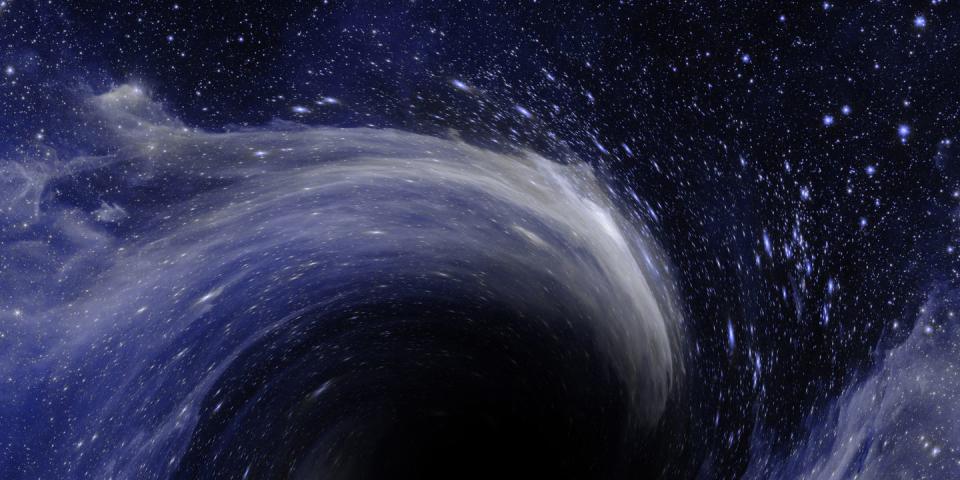Researchers May Have Spotted a Star Made of Dark Matter. If So, That's Crazy.

A recent preprint claims that a system thought to consist of a star orbiting a hole may instead feature a completely hypothetical object.
The duo behind the paper claims that there is a possibility that, instead of a black hole, we may be looking at a boson star—a hypothetical object made of dark matter.
The researchers are not convinced that a black hole and a star would have formed a system the way we’re seeing, and put forth the boson star theory as an alternative explanation, even though it’s highly unlikely.
The European Space Agency’s Gaia satellite is trying to map the galaxy. As such, every so often, the project produces huge data releases that astronomers can spends months to years sorting through to find cool things.
In one of those releases, researchers spotted what they believed to be a Sun-like star orbiting a very small black hole. But recently, a research duo from the Institute of Physics of the Czech Academy of Sciences has challenged that theory. They believe that, instead of a black hole, the mystery dark object in this two-body system is something called a boson star—a completely hypothetical object made entirely of dark matter. The researchers have uploaded a paper on this theory to the preprint server arXiv. It has yet to be peer reviewed.
It seems like a jump in logic to go from black hole to completely theoretical object, and it might be. It’s incredibly unlikely that we just happened to stumble across a completely theoretical object, even in a very wide-reaching survey like Gaia. It’s a lot more likely that we’re still missing a piece of information that would allow us to understand this system.
But the duo has their reasons for believing what they believe. The main one is that, according to what we know about the mechanics of stellar system formation, it’s incredibly unlikely for a black-hole-Sun-like-star duo to have formed in the first place.
Black holes form from truly massive stars. Our Sun, and stars like it, don’t fit those “truly massive” requirements. The researchers center their claim on the idea that it would be incredibly unlikely for a binary system to form between a Sun-like star and a star big enough to form a black hole—which is what would have had to occur in order to produce the result found in the Gaia data. The duo suggests that the balance of gravity necessary to keep two stars like that locked together without crashing into each other or spiraling away is simply too finicky to be likely.
So, instead, they turned to boson stars. Boson stars, if they exist, are high concentrations of dark matter—the entirely undetectable stuff that makes up most of the matter in our universe. We’ve seen bosons before—photons (light particles), gluons (strong force particles), and the Higgs Boson (often referred to as the “God particle”) are all established existing bosons—but according to the theory being implied by the presumed existence of boson stars, dark matter bosons would behave a little differently. They would just sort of permeate the universe, which would result in the occasional pile-up that is the boson star.
The idea that dark matter is made of bosons is only one theory as to what makes up the unmeasurable material, but it’s not a particularly out-there one. It does, however, meant that the suggestion that this particular system contains a boson star means you’re piling theory on top of theory.
But the system itself is probably worth further investigation, whether it turns out to be a hotbed for dark matter or not. Maybe on second glance, we’ll learn more about stellar system formation. Maybe we’ll learn more about dark matter. Maybe both. But we’ll certainly learn something.
You Might Also Like

 Yahoo Sports
Yahoo Sports 